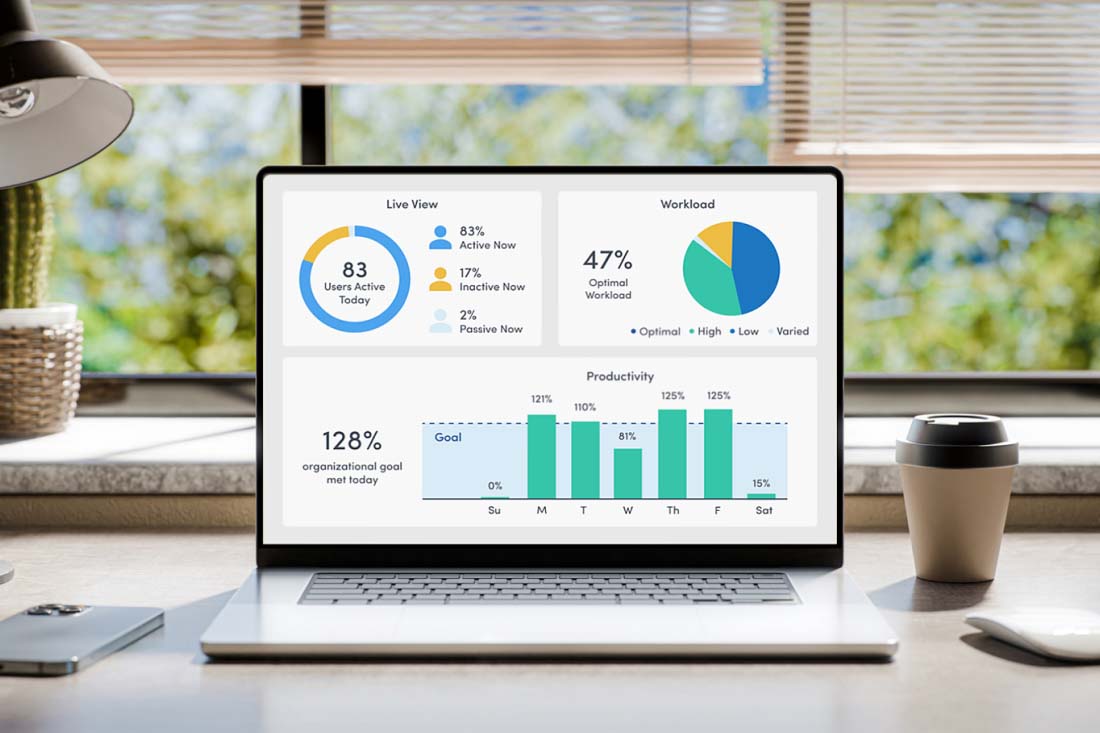With productivity at an all-time high — thanks to developments in technology and round-the-clock availability — employee burnout is a rising threat to organizations. Burnout can have a serious impact on employees’ mental health, but it can also have lasting effects on business operations. In this post, we’ll explore the impact of burnout on the workplace and eight tips to prevent and manage it.
What is employee burnout?
Employee burnout is a complex phenomenon affecting both individuals and organizations. It’s a state of physical and mental exhaustion an employee can develop over time as a result of chronic workplace stressors, such as:
- Heavy workloads
- Lack of control or choice over work
- Insufficient support from supervisors, colleagues or leadership
- Personal issues or troubles at home
Burnout can affect anyone, no matter their position or level of responsibility within an organization.
Signs and symptoms of employee burnout
The biggest step in preventing burnout is to know the signs and symptoms. Sometimes team members on the verge of burnout will show obvious signs, but sometimes the symptoms may surprise you. Even high-performing employees are at risk of burnout, so it’s important to keep an eye out for unexpected warning signs of burnout even in your best team members.
Some key signs of burnout include:
- Chronic fatigue or exhaustion
- Increased absenteeism
- Decreased productivity
- Decision fatigue
- Missed deadlines
- Cynicism or detachment
- Emotional or physical distancing from other colleagues
- Decreased satisfaction or enjoyment of work
- Long hours or increased overtime
- Unwillingness to take time off
- High turnover rates
The impact of employee burnout
It’s obvious that burnout will have a negative physical, emotional and mental effect on employees who experience it. But it also has significant implications for the workplace. It can negatively affect productivity, morale and even the financial health of an organization.
Effects on employee productivity
Employees who experience burnout can struggle to concentrate, make decisions and perform at their best. Meaning — decreased productivity levels and increased errors. Burnout can also mean higher rates of absenteeism and employee turnover, which can throw a wrench into a team’s ability to complete projects.
Burnout and workplace morale
Unfortunately, burnout can be contagious because of its negative effect on workplace morale. Because one of the chief symptoms of burnout is emotional exhaustion and cynicism, team members are often affected by their colleagues’ burnout just by hearing them talk about it. Negative attitudes spread like wildfire through an organization. At the same time, when employees don’t meet deadlines, can’t complete tasks effectively, or make increased mistakes due to burnout, it causes problems. Other team members have to pick up the slack, redo tasks or face blockers to their own productivity, which can increase their stress levels as well.
Financial implications of employee burnout
Burnout is costly for organizations. Increased absenteeism, reduced productivity and higher turnover rates associated with burnout can result in significant financial losses. According to a study conducted by the World Health Organization, depression and anxiety disorders cost the global economy an estimated $1 trillion every year in lost productivity,amounting to about 12 billion lost work days. Because work quality can suffer when an employee experiences burnout, companies may lose money through redoing projects, missing deadlines or losing customers due to lagging satisfaction scores.
Preventive measures against burnout
When it comes to managing employee burnout, preventing it is the most important thing an organization can do. Finding and using strategies that promote a healthy work-life balance and addressing the underlying causes of burnout can help organizations create a more supportive and resilient work environment. Here are a few suggestions of how to prevent burnout in your organization:
Promote work-life balance
While it may be an overused corporate buzzword, work-life balance is one of the biggest aspects in employee burnout. Encourage your employees to prioritize self-care and set clear boundaries between work and personal life to help mitigate the risk of burnout. Flexible scheduling, telecommuting, company holidays and paid time off are some ways to contribute to a better work-life balance. Develop policies that encourage a workplace culture that champions employees taking these steps to take care of themselves, rather than glamorizing “the grind” or overwork.
Encourage regular breaks
Regular breaks throughout the workday are essential for employees to recharge and alleviate stress. Our brains aren’t built to work continuously, and by taking breaks, we can recharge our brains to allow them to function better. Find ways to encourage employees to take short breaks or engage in activities to relax and recharge throughout the day. Many workplaces have 10-minute breaks built into their employee schedules and will almost force employees to take these breaks to help with productivity. Other ways employees can take a break include going for a walk, practicing meditation or mindfulness or even engaging in their favorite hobbies.
Implement employee wellness programs
By investing in employee wellness programs, you can support your employees’ physical and mental well-being. Some program examples can include workshops on stress management, access to mental health resources and programs that promote healthy lifestyle choices. Employee assistant programs (EAPs) can also provide confidential counseling services for employees who may experience burnout.
8 tips for managing existing employee burnout
While prevention is the ideal way to approach employee burnout, managing existing burnout is just as important. By providing support and resources, organizations can help employees recover from burnout and regain their well-being. These eight tips may help you manage burnout in your employees:
1. Listen to employees
Open, honest communication is the best way to help employees overcome burnout. They need to trust that they won’t be penalized for speaking out and they need to believe you can provide them with the support they need. Encourage managers and supervisors to check in with their team members regularly and provide a safe space for discussions about workload, stress and potential solutions.
2. Offer professional help
Employees who experience burnout can’t “just get over it.” They may need professional help from mental health experts, doctors and others. Encourage employees to use their health benefits, EAP memberships and other professional resources to get them support.
3. Reevalute responsibilities
Make sure all employees understand their roles and responsibilities. Sometimes burned out employees in high-stress situations bite off more than they can chew, and you may be surprised at how much work they’ve taken on. Delegate tasks where you can and help other team members step up to help employees facing burnout lighten their loads. On this note, you should also make sure employees’ roles align with their responsibilities. If an employee is frequently doing things beyond their job description, it’s a good idea to figure out why and make changes based on your findings. You may discover an employee’s role has warped over time and warrants a promotion, or that the employee is being underutilized by doing tasks below their capabilities.
4. Reassign workloads
If an employee is going through burnout, they may need to work less, even if they don’t officially take time away from their work. Using workload management platforms like ActivTrak can help you spot where employees may be overcommitted and where others may need more to do, helping you reassign work based on data. You can also use the platform to spot overworked employees who may not self-report on how close they are to burnout and get them help before they have to ask.
5. Quit glorifying overwork
Many workplaces reward employees for overworking, even without realizing it. One way to create a more positive work environment is to make sure employees are rewarded for their performance, work quality or commitment to organizational goals while tying those to more positive metrics like their ability to support other team members or reduce employee stress. It may take time and effort to change how your workplace views “commitment,” but this cultural shift can help your employees’ well-being and is well worth it in the long term.
6. Lead by example
Sometimes leadership teams will tell their employees to take time off and use company resources to prevent burnout without taking that advice for themselves. Employees can tell when their managers or supervisors are staying late, working overtime or otherwise going against policies that prevent burnout, and may feel pressured to follow suit. To help your employees feel safe following policies to help them manage stress, every employee in the organization – from the CEO to the mailroom – will need to be held accountable.
7. Cultivate fulfilling work for employees
Having to do busywork or engage in meaningless tasks can make employees feel stressed out. Find ways to automate repetitive tasks to free employees to do more fulfilling work and provide them with the right tools and technology to complete tasks more efficiently. Also, ensure that employees are given opportunities to advance in their careers or improve their skills so that they can more fully enjoy what they do.
8. Give employees choices in how they spend their time
To rest and recharge, employees need plenty of time off. At the same time, they need to feel as if they have some control over their schedules. While it’s not possible for every organization to give unlimited PTO to their employees (and it may even be detrimental to do so), the opportunity to take a mental health day is an important way to help employees manage their stress. Flexible work schedules are another way that organizations can give their employees more say in how, when and where they work, which can prevent burnout that comes from issues in an individual’s home life.
Manage and prevent employee burnout with ActivTrak
Quickly spot the signs of burnout in your workplace and prevent it with ActivTrak workforce analytics. Use real-time data to compare workloads across teams and see where individuals or teams may need more help. Set benchmarks for healthy work habits and see changes in patterns to identify possible problems. Share insights with managers and employees alike to help teams be aligned in ways to improve performance and prevent overwork or burnout.
Get a demo of ActivTrak today to find out how it can help your organization spot, manage and prevent employee burnout.





